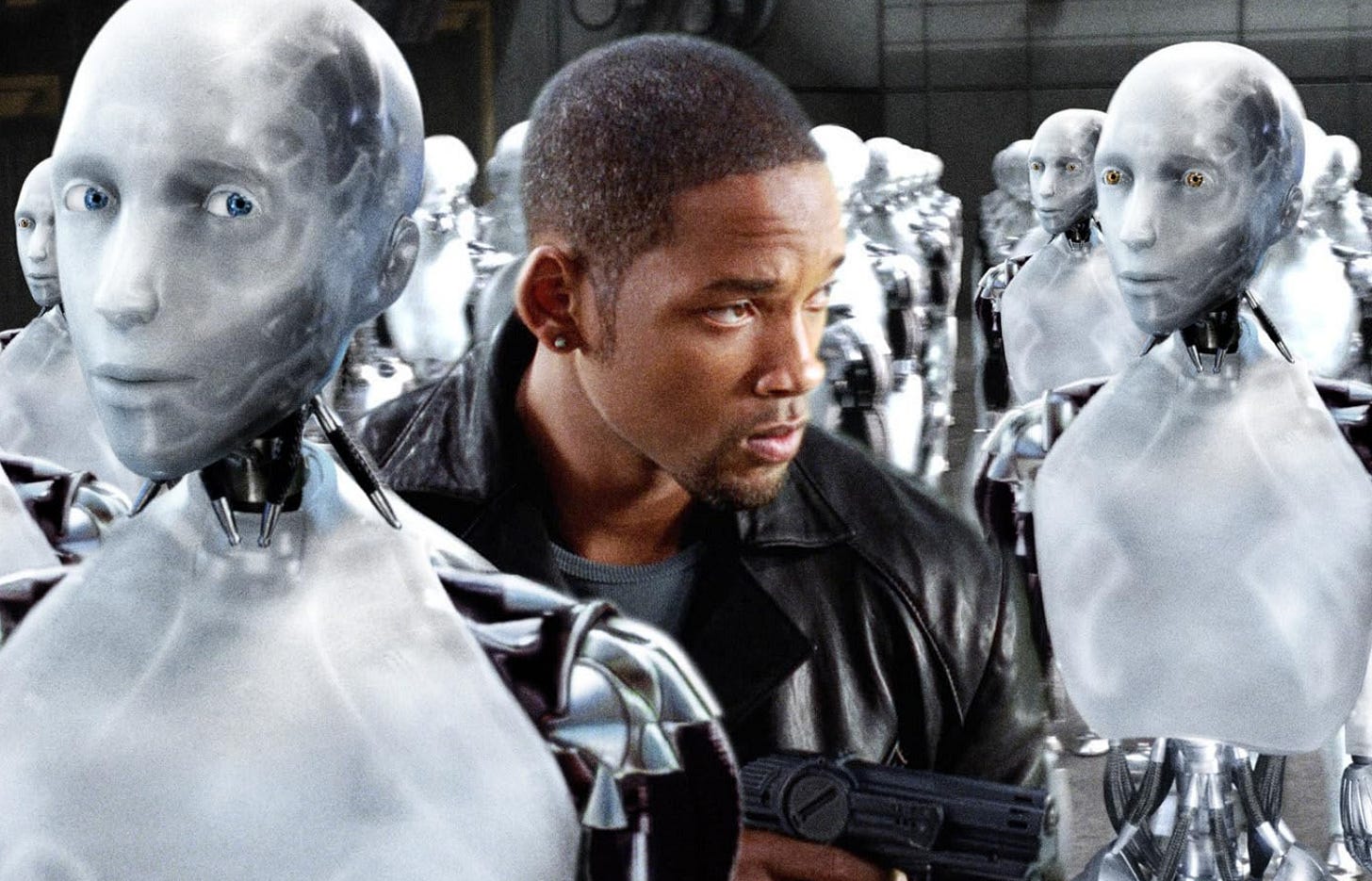AI Makes Content But Not Art
It Takes a "Person" to Make Art

Can AI make Art with a capital “A”? It’s a big question these days, as rapidly improving AI menaces human jobs and human exceptionalism. (Last month I wrote about how putting out work as a creative these days feels like hastening your own doom.)
I would make a distinction between content and art that’s produced commercially on one hand versus Art with a capital “A” on the other. AI can make content and visuals produced for commerce, and those are among the human activities that are threatened by the rise of AI. But AI can’t make Art.
So what distinguishes Art with a capital “A”? I’d say it’s about the person’s perspective, which comes from their lived experience, that is being expressed with Art.
Fundamentally, the reason we care about Art is that there’s a person’s perspective being expressed.
It’s the sharing of a particular lived perspective that makes it Art. Consider corporate logo design or illustrations produced for advertising. We don’t consider art like those to be Art because they aren’t about expressing a person’s or persons’ personal perspective. They’re done for commerce.
Similarly, videos and stills produced to feed the TikTok and Instagram algorithms and attract likes, that aren’t about personal expression, we call “content”. AI, rehashing and remixing art and Art that it’s been fed, can produce content. We’re getting into gradations here, but I’d guess that factory farmed entertainment like the Marvel Cinematic Universe doesn’t feel like Art to most if not all of us. And that’s because it’s ultimately about appealing to as wide an audience as possible to make as much money as possible as opposed to personal expression, so that feels like “content”. AI may eventually produce that kind of content, too.
But we wouldn’t look at a painting an AI generated in shades of ultramarine and pthalo blue of a ragged human family stumbling along darkened shores and sympathize with the internal turmoil it seems to express, wondering what hardships the AI had weathered to inspire the painting.
Of course, and unfortunately, this distinction of who is capable of making what we consider to be Art doesn’t help all the creative professionals whose livelihoods depend on being hired to create art. Holding out “starving Artist” as the last bastion against AI for creative professionals still means livings wouldn’t be made.
If you’d like to read more, I stumbled on this essay by Eric Hoel while I was working on this post. Hoel explores at great length how the human experience is at the heart of “Art”.
What if it were a sentient Artificial General Intelligence (AGI)?
Could a sentient Artificial General Intelligence create Art? If we accept my position above about what we consider to be Art, this is a question of whether a sentient AGI is a “person”. That’s a whole other ball of wax that I won’t dive into here. But assuming there were an AGI we considered to be sentient and we all considered a sentient AGI a “person” as much as a human is, then I would say by extension that we should judge whether or not its creations are Art by the same (nebulous) standards as we do humans’ creations. (Not everything humans create is Art.)

The 2004 movie about artificial intelligence and the alignment problem, I, Robot, lands a nice jab at human exceptionalism in an exchange between the protagonist, Del Spooner, played by Will Smith, and the AGI robot Sonny, played by Alan Tudyk.
Spooner: Can a robot write a symphony? Can a robot turn a canvas into a beautiful masterpiece?
Sonny: Can you?
Spooner: …
This scene points out that having the technical skills needed to make art (writing a symphony or painting a masterpiece) isn’t what makes someone/something a “person”. The great majority of humans don’t spend much time working on their craft of making art, but that doesn’t make them not persons. Conversely, having the technical skills to make art doesn’t make someone a person. And as Spooner’s attitude reveals, even if a robot were to create a technically proficient work of art, we humans wouldn’t care about it the way we would if a human were to have created that same work of art (and potentially Art).
By the end of the movie, though, Spooner might have changed his mind about Sonny’s ability to create capital “A” Art, as we are meant to understand that Sonny isn’t just an AGI, but a sentient robot. A robot with emotions and subjective experience.




William I think I agree with you! I hadn't thought about the distinction between art and content in the context of AI before and I find it illuminating. I have also been curious to find that I find early AI works to feel more like art than the near perfect things that can now be created, I'm curious about that, they were generally more abstracted, is abstraction something I intuit as a human trait while perfection is not? Lovely food for thought - thanks!